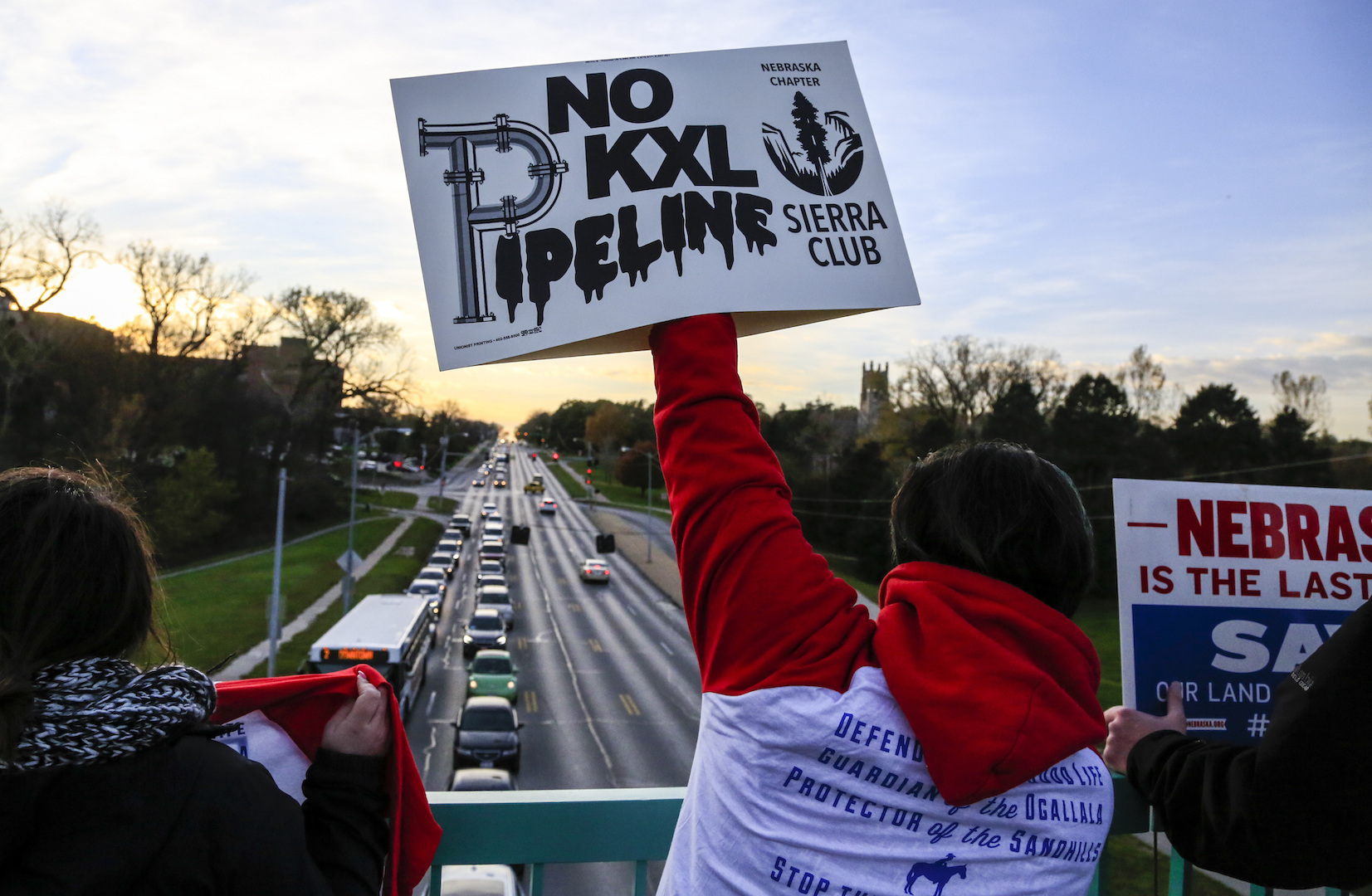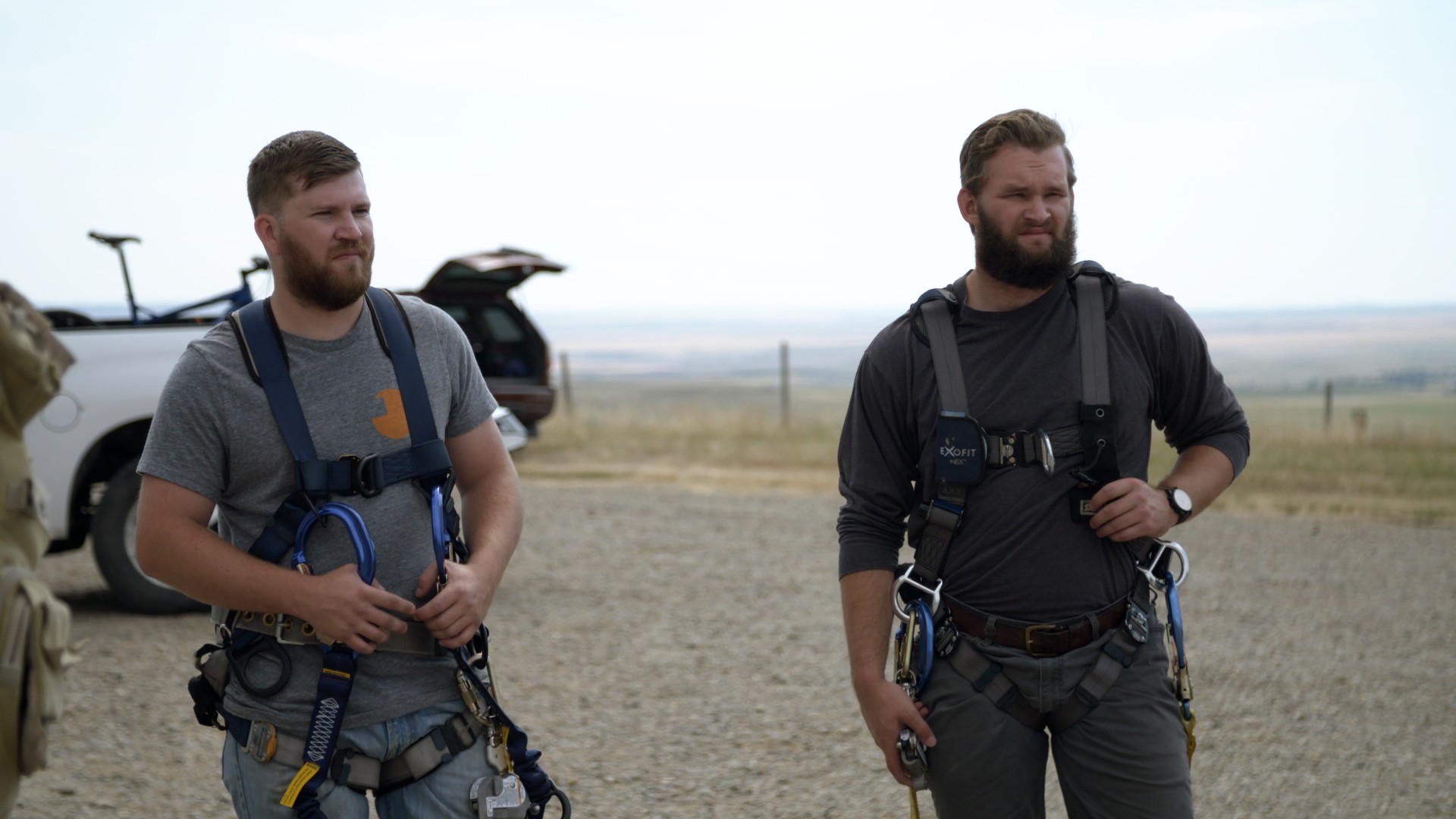Despite their costly environmental impacts, oil spills like the recent one in South Dakota weren’t a factor in the decision to approve the Keystone XL. Legally, they couldn’t be.A commission in Nebraska approved a route for the final section of the Keystone XL pipeline in a 3-2 vote on Monday. The decision happened just 385 miles away from where a leak in the existing pipeline gushed over 200,000 gallons of oil into a farmer’s field on Thursday. For many of the local Native American tribes, landowners, and environmental groups, the spill provided even more evidence against building the pipeline. But because of a 2011 law, the five-member commission can’t consider impacts of oil spills, both real and potential, when debating whether to allow any major pipelines to be built in their state.In 2011, Nebraska passed the Major Oil Pipeline Siting Act (MOSPA), which prevents “safety considerations, including the risk or impact of spills or leaks” to be considered when debating to approve or deny route permits for new pipelines. Under the law, impacts from oil spills aren’t a valid reason for denying permits for construction.But the local tribes and other concerned parties still worry about the risk of a spill and potential water contamination. The 280-mile route approved by the commission on Monday isn’t TransCanada’s “preferred” route. Instead the new route, called the Mainline Alternative Route, will parallel the existing Keystone pipeline and intersect nine more streams than the preferred route as well as cross over the Ogallala Aquifer in three counties. The aquifer supplies drinking water to more than 2 million people in the Great Plains, and experts predict that in a worst-case scenario, a spill from the Keystone XL pipeline over this aquifer could contaminate 5 billion gallons of water.READ: The Keystone pipeline oil spill might be worse than we thought“The critics of the oil pipelines have a great concern about the lasting impact of such oil spills. This would include this Keystone Pipeline’s just-most-recent oil spill adjacent to the Sisseton Reservation in South Dakota,” Daniel Sheehan, the Lakota People’s Law Project Chief Counsel, told VICE News. “This oil spill turns out to be located less than 10 feet from a water channel running directly into the James River.” TransCanada did not respond to a request for comment.“They have a right to be consulted beforehand,” Rhoades told VICE News after the vote. In a testimony to the commission, a Keystone representative admitted that the company had not conferred with any Native America tribes in Nebraska. While disappointed in the outcome, Rhoades said that she and her fellow commissioners “just evaluated the evidence differently.” She also confirmed that the Major Oil Pipeline Siting Act explicitly prevented them from considering the effects of potential or real spills in their decision.“I fully understand that MOPSA forbids this commission from considering issues related to pipeline safety. Nonetheless, it is obvious that safety issues are of prime concern to the public regarding to this pipeline,” Commissioner Rod Johnson, who voted yes on Monday, wrote in his concluding statement for the vote. “Safety was the number one issue raised at the commission’s four public meetings and in the many thousands of written comments we have received during this process.”In an updated statement to VICE News about the environmental impact of the most recent oil spill, the South Dakota Department of Environment and Natural resources stated that “full assessment work has not been completed,” although the agency also reiterated the spill hadn’t occurred near any sources of municipal drinking water.“As a result of today’s decision, we will conduct a careful review of the Public Service Commission’s ruling while assessing how the decision would impact the cost and schedule of the project,” TransCanada said in a statement after the vote.The case now has a 30-day appeal window, and environmental groups, tribes, and landowners are gearing up to fight back.“The Sierra Club and our allies will continue to explore all legal options to fight back against this project and protect our water, our health, our communities, and our climate from Keystone XL,” Sierra Club Executive Director Michael Brune said in a statement. “Our movement defeated this pipeline once, and we will do it again.”Cover image: This aerial photo shows spills from TransCanada Corp.’s Keystone pipeline, Friday, Nov. 17, 2017, that leaked an estimated 210,000 gallons of oil onto agricultural land in northeastern South Dakota, near Amherst, S.D. (DroneBase via AP)
While disappointed in the outcome, Rhoades said that she and her fellow commissioners “just evaluated the evidence differently.” She also confirmed that the Major Oil Pipeline Siting Act explicitly prevented them from considering the effects of potential or real spills in their decision.“I fully understand that MOPSA forbids this commission from considering issues related to pipeline safety. Nonetheless, it is obvious that safety issues are of prime concern to the public regarding to this pipeline,” Commissioner Rod Johnson, who voted yes on Monday, wrote in his concluding statement for the vote. “Safety was the number one issue raised at the commission’s four public meetings and in the many thousands of written comments we have received during this process.”In an updated statement to VICE News about the environmental impact of the most recent oil spill, the South Dakota Department of Environment and Natural resources stated that “full assessment work has not been completed,” although the agency also reiterated the spill hadn’t occurred near any sources of municipal drinking water.“As a result of today’s decision, we will conduct a careful review of the Public Service Commission’s ruling while assessing how the decision would impact the cost and schedule of the project,” TransCanada said in a statement after the vote.The case now has a 30-day appeal window, and environmental groups, tribes, and landowners are gearing up to fight back.“The Sierra Club and our allies will continue to explore all legal options to fight back against this project and protect our water, our health, our communities, and our climate from Keystone XL,” Sierra Club Executive Director Michael Brune said in a statement. “Our movement defeated this pipeline once, and we will do it again.”Cover image: This aerial photo shows spills from TransCanada Corp.’s Keystone pipeline, Friday, Nov. 17, 2017, that leaked an estimated 210,000 gallons of oil onto agricultural land in northeastern South Dakota, near Amherst, S.D. (DroneBase via AP)
Advertisement
Advertisement
And it’s not just the recent spill that concerns people. According to a 2009 risk assessment, TransCanada estimated the existing Keystone pipeline would have 2.2 spills over a 10-year period. But the Keystone pipeline had more than 12 spills in its first operating year alone, from August 2010 to June 2011 — far more than the company thought. A 2016 spill in South Dakota, for example, released more than 16,000 gallons. But the spill on Thursday dumped more than 200,000 gallons in South Dakota — although that figure could grow even more.The Keystone XL pipeline will also transport a viscous type of oil called diluted bitumen, or tar sands oil, which currently flows through the existing Keystone pipeline as well. Because it’s so thick, leaks can be difficult to detect. If the oil does spill, it’s often far more detrimental to sensitive water resources. This year, oil and gas companies like Exxon have already taken billions of barrels of tar-sands oil off the books, because of lowering oil prices and the high cost of tar-sands extraction.According to testimonies from the company and other experts, the approved Mainline Alternative Route would also affect 40 additional landowners and cross six counties that haven’t yet been surveyed for the route. Nebraska Commissioner Crystal Rhoades, who voted against the pipeline on Monday, pointed out that landowners now in the path of the alternative route weren’t notified, and therefore did not have had opportunity to comment, potentially violating their due process rights.“They have a right to be consulted beforehand.”
Advertisement

